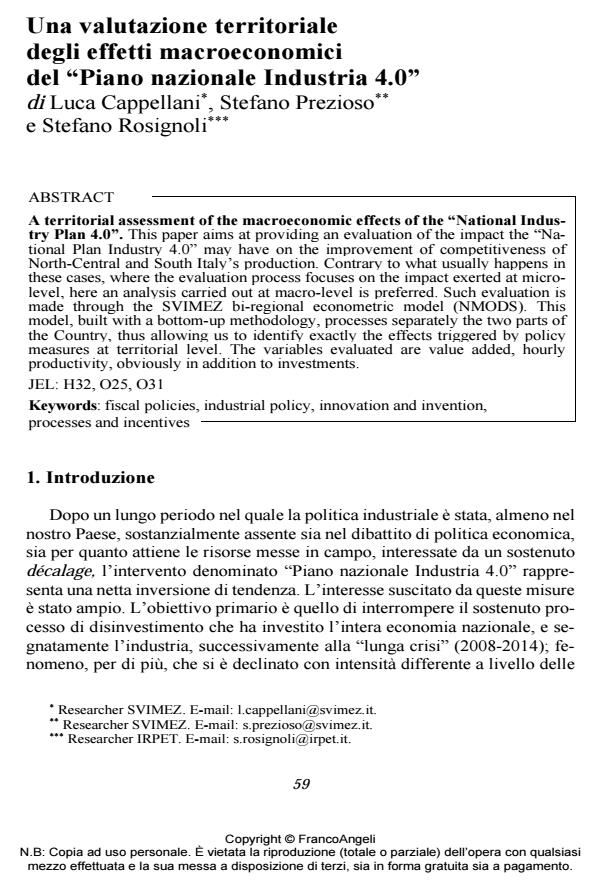Una valutazione territoriale degli effetti macroeconomici del "Piano nazionale Industria 4.0"
Journal title ECONOMIA PUBBLICA
Author/s Luca Cappellani, Stefano Prezioso, Stefano Rosignoli
Publishing Year 2018 Issue 2017/2
Language Italian Pages 33 P. 59-91 File size 376 KB
DOI 10.3280/EP2017-002004
DOI is like a bar code for intellectual property: to have more infomation
click here
Below, you can see the article first page
If you want to buy this article in PDF format, you can do it, following the instructions to buy download credits

FrancoAngeli is member of Publishers International Linking Association, Inc (PILA), a not-for-profit association which run the CrossRef service enabling links to and from online scholarly content.
A territorial assessment of the macroeconomic effects of the "National Industry Plan 4.0". This paper aims at providing an evaluation of the impact the "National Plan Industry 4.0" may have on the improvement of competitiveness of North-Central and South Italy’s production. Contrary to what usually happens in these cases, where the evaluation process focuses on the impact exerted at micro-level, here an analysis carried out at macro-level is preferred. Such evaluation is made through the SVIMEZ bi-regional econometric model (NMODS). This model, built with a bottom-up methodology, processes separately the two parts of the Country, thus allowing us to identify exactly the effects triggered by policy measures at territorial level. The variables evaluated are value added, hourly productivity, obviously in addition to investments.
Keywords: Fiscal policies, industrial policy, innovation and invention, processes and incentives
Jel codes: H32, O25, O31
Luca Cappellani, Stefano Prezioso, Stefano Rosignoli, Una valutazione territoriale degli effetti macroeconomici del "Piano nazionale Industria 4.0" in "ECONOMIA PUBBLICA " 2/2017, pp 59-91, DOI: 10.3280/EP2017-002004